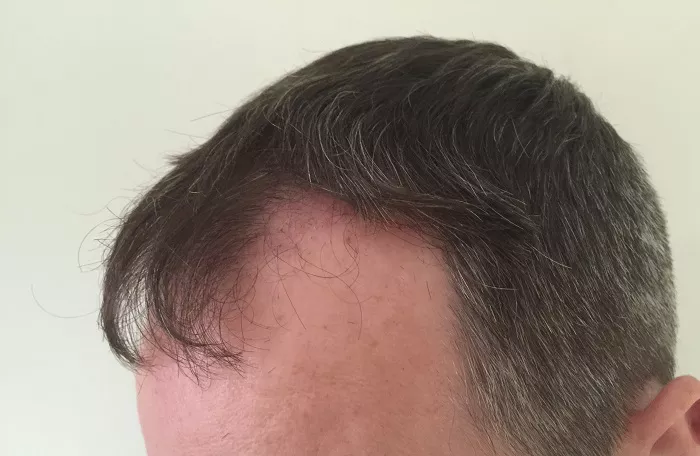Hair transplant surgery is a popular and effective way to restore hair loss and improve the appearance of thinning hair. However, many people may wonder if hair transplant surgery is safe and if the results are permanent. In this article, we will explore the safety and longevity of hair transplant surgery and the factors that can affect the success of the procedure.
The Safety of Hair Transplant Surgery
Hair transplant surgery is generally considered safe when performed by a skilled and experienced surgeon. Like any surgical procedure, there are risks involved, including bleeding, infection, and scarring. However, these risks are generally low and can be minimized by choosing a qualified surgeon and following proper post-operative care instructions.
Before the surgery, the surgeon will conduct a thorough medical evaluation to ensure that the patient is a good candidate for the procedure. This may include reviewing the patient’s medical history, performing a physical exam, and conducting blood tests to check for any underlying medical conditions that may increase the risk of complications.
During the surgery, the surgeon will use local anesthesia to numb the scalp and minimize discomfort. The surgeon will then carefully remove hair follicles from the donor area of the scalp and transplant them to the recipient area, where they will continue to grow and produce hair.
The Longevity of Hair Transplant Results
Hair transplant surgery is a popular and effective way to restore hair loss and improve the appearance of thinning hair. The longevity of hair transplant results is an important consideration for patients who are considering this procedure.
The transplanted hair follicles are typically resistant to the effects of DHT, the hormone that causes male pattern baldness. This means that the transplanted hair can continue to grow and produce hair for many years after the surgery. In general, hair transplant results are considered permanent, as the transplanted hair follicles are genetically resistant to DHT and will continue to grow and produce hair in their new location.
However, it’s important to note that hair transplant surgery is not a cure for baldness or hair loss. While the transplanted hair follicles are resistant to DHT, other hair follicles on the scalp may continue to be affected by the hormone and eventually lead to further hair loss. Additionally, the success of the procedure can depend on several factors, including the skill of the surgeon, the technique used, and the patient’s individual hair growth patterns.
Factors That Can Affect the Safety and Longevity of Hair Transplant Surgery
Several factors can affect the safety and longevity of hair transplant surgery, including:
Surgeon skill:
The skill and experience of the surgeon performing the hair transplant surgery can affect the success of the procedure. It’s important to choose a qualified and experienced surgeon who can provide personalized care and advice on the best technique for your individual needs.
Technique used:
The technique used for hair transplant surgery can also affect the success of the procedure. FUE (Follicular Unit Extraction) and FUT (Follicular Unit Transplantation) are two common techniques used for hair transplant surgery, and the success of each technique can depend on the patient’s individual needs and the skill of the surgeon performing the procedure.
Post-operative care:
Proper post-operative care is essential for ensuring safe and long-lasting hair transplant results. Patients should follow their surgeon’s instructions for caring for their hair and scalp after the surgery, including avoiding strenuous physical activity, using special shampoos and conditioners, and avoiding certain hair care products or styling techniques.
Individual hair growth patterns:
The success of hair transplant surgery can also depend on the patient’s individual hair growth patterns. Some patients may experience better results than others, depending on the density and quality of their hair follicles.
Patient health:
The overall health of the patient can also affect the success of hair transplant surgery. Patients with underlying medical conditions, such as diabetes or autoimmune disorders, may be at higher risk for complications and may require additional monitoring and care.
Age:
The age of the patient can also affect the success of hair transplant surgery. Younger patients may have better results, as they typically have more robust hair follicles and a stronger blood supply to the scalp. However, older patients can still achieve good results with proper care and attention to their individual needs.
Lifestyle factors:
Certain lifestyle factors, such as smoking or excessive alcohol consumption, can also affect the success of hair transplant surgery. Patients should avoid smoking and limit alcohol consumption before and after the surgery to minimize the risk of complications and ensure optimal results.
By considering these factors and working with a skilled and experienced surgeon, patients can achieve safe and long-lasting hair transplant results.
Tips for Ensuring Safe and Long-Lasting Hair Transplant Results
To ensure safe and long-lasting hair transplant results, patients should:
Choose a skilled and experienced surgeon:
Choose a surgeon who is board-certified and has extensive experience performing hair transplant surgery.
Follow post-operative care instructions:
Follow your surgeon’s instructions for caring for your hair and scalp after the surgery to ensure proper healing and long-lasting results.
Consider the technique used:
Consider the benefits and drawbacks of each technique used for hair transplant surgery and choose the best approach for your individual needs.
Be patient:
Hair transplant results can take several months to become apparent, so be patient and follow your surgeon’s instructions for optimal results.
Conclusion
In conclusion, hair transplant surgery is generally safe and can provide long-lasting results for many patients. However, the success of the procedure can depend on several factors, including the skill of the surgeon, the technique used, and the patient’s individual hair growth patterns. By choosing a skilled and experienced surgeon, following proper post-operative care instructions, and being patient, patients can achieve
Related Topics:

